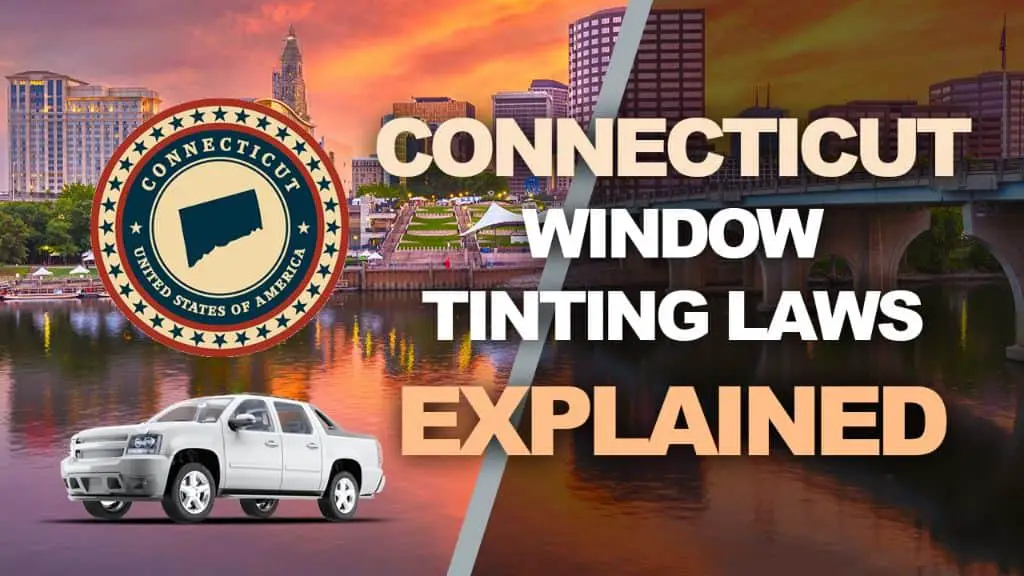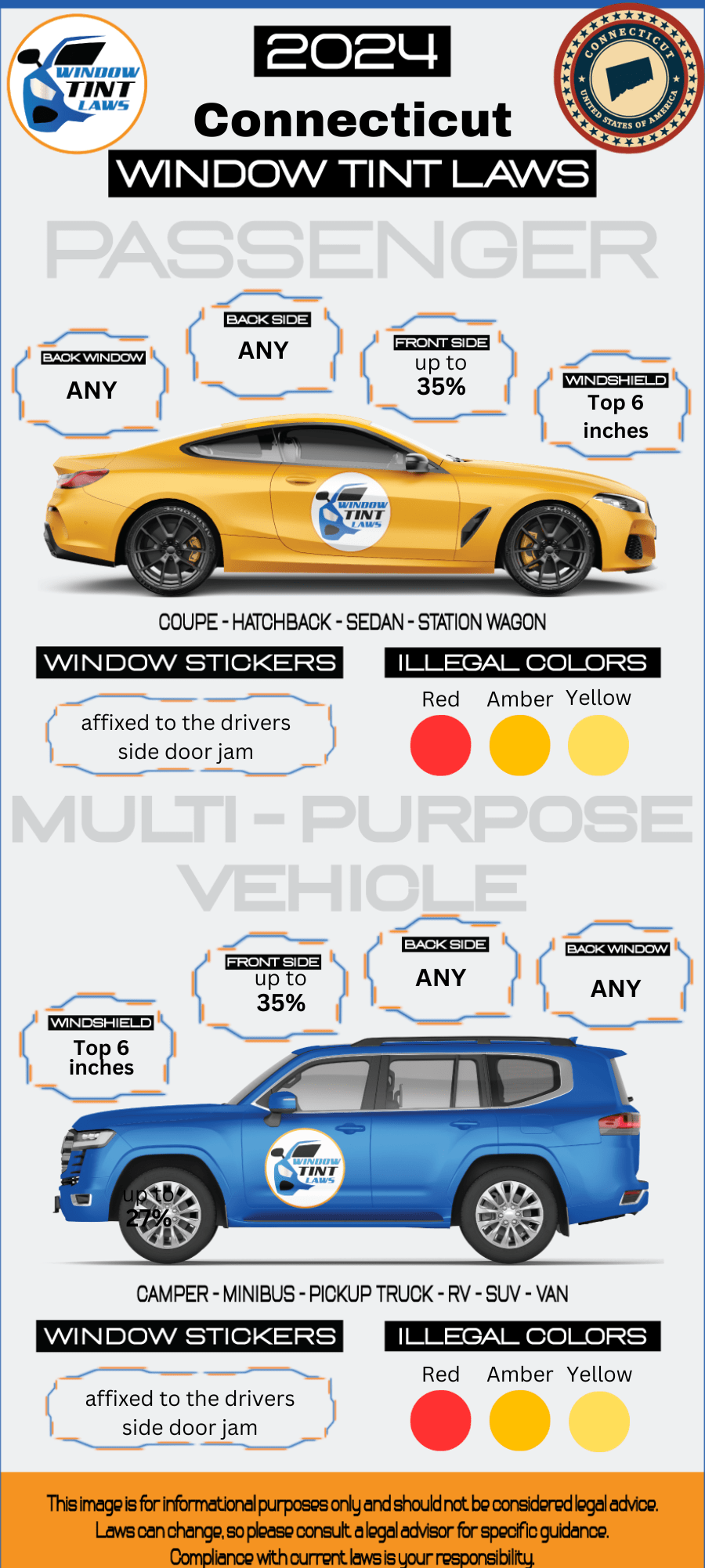

Article Created by Ryan Pietrzak
Last updated on February 2, 2024Connecticut Tint Laws – 2024 Updated Legal Tint Limit
Please note that Connecticut Tint Laws Regulation can change daily and may be interpreted differently at the city or county level. We recommend verifying this information with your local DMV or law enforcement agencies. We have manually fact-checked this content using official state resources. Connecticut enacted tinting laws in 1994. If any information provided is incorrect or outdated, please contact us so we can make the necessary corrections. Thank you.
2024 Connecticut Tint Laws – Legal Tint Limit For Passenger Vehicles
- Front Windshield: Non-reflective tint is allowed above the manufacturer’s AS-1 line.
- Front seat side windows: up to 35% tint darkness allowed
- Back seat side windows: Any tint darkness can be used
- Rear window: Any tint darkness can be used
2024 Connecticut Tint Laws – Legal Tint Limit For Multi-Purpose Vehicles
- Front Windshield: Non-reflective tint is allowed above the manufacturer’s AS-1 line.
- Front seat side windows: up to 35% tint darkness allowed
- Back seat side windows: Any tint darkness can be used
- Rear window: Any tint darkness can be used

- Medical exemptions: Connecticut tint laws permit darker tints on front side windows with a doctor’s note
- Connecticut tint laws prohibit metallic or reflective tint on any of the windows
- Connecticut tint laws are statewide with no additional local regulations
- Violating Connecticut tint laws can carry a maximum $100 and/or 10 days in prison for first conviction. Second conviction within a year max $200 and/or 30 days in jail. Third and subsequent offense within a year $500 and/or up to 3 months in prison.
What does VLT Mean according to Connecticut Tint Laws?
- Window tint film’s light transmission is measured as VLT (Visible Light Transmission) and each state has its own legal limits for VLT on car windows.
- A HIGHER VLT means that more light is allowed to pass through the window tint film.
- Example: a 75% tint will allow 75% of the light to pass through whereas a 5% tint will only allow 5% of the light to pass through, making the 5% tint a much darker film.
- Connecticut window tint laws has specific VLT limits for Passenger Vehicles and Multi-Purpose Vehicles.
FAQ’s Regarding Connecticut Tint Laws and Connecticut Legal Tint Limit
What is the darkest legal tint in Connecticut?
The darkest legal tint for passenger vehicles in Connecticut is 35% VLT (Visible Light Transmission) for front side windows. This means that the tint must allow at least 35% of the light to pass through the window. The back side and rear window can be 0% VLT.
Are police exempt from window tint laws in Connecticut?
In Connecticut, police vehicles are exempt from the state’s window tint laws. This exemption allows law enforcement vehicles to have window tint darker than the legal limit for regular passenger vehicles.
How do I get a tint waiver in Connecticut?
To obtain a window tint waiver in Connecticut, you must have a medical condition that necessitates darker tint and submit a completed Application for Window Tint Medical Exemption to the Department of Motor Vehicles along with a physician’s certification.
How much is a tint ticket in Connecticut?
In Connecticut, the cost of a window tint violation ticket can vary, but typically it ranges from $50 to $100. Repeat offenses may result in higher fines.
Can you get pulled over for tint in Connecticut?
Yes, in Connecticut, you can be pulled over by law enforcement for having window tint that appears to be darker than the state’s legal limit. This could lead to a ticket or a requirement to remove the non-compliant tint.
How to get a Tint Exemption in Connecticut
Connecticut State Law allows window tint medical exemptions to be given to vehicle owners. To file for a medical exemption in Connecticut you must fill out :
- The Request for Application & Special Permit for Exemption from Tinted Window Requirements (Form E-220)
After being approved for Medical Exemption in Connecticut through this form, your vehicle’s window tint must be validated by the Commercial Vehicle Safety Division after passing the tint measurement at either the Wethersfield or Hamden inspection lanes.
The Medical Exemption in Connecticut allows you to tint your windows all the down to 20 percent VLT if needed. You can only file for a medical exemption if your condition requires between a 20 and 32% tint.
You are required to carry the physical medical exemption certification with you at all times in your vehicle if you have window tint installed that falls under the medical exemption rules. Compliance stickers will not be affixed to windows in exempted vehicles.
If your window tint has a light transmittance of less than 20 percent you will fail the measurement and not be issued the medical exemption. If this happens to be the case with your vehicle upon inspection you will be referred to the Medical Review Unit.
For more information regarding window tint medical exemptions in Connecticut you can check out these resources:

Ryan Pietrzak
Creator of Windowtintlaws.us

